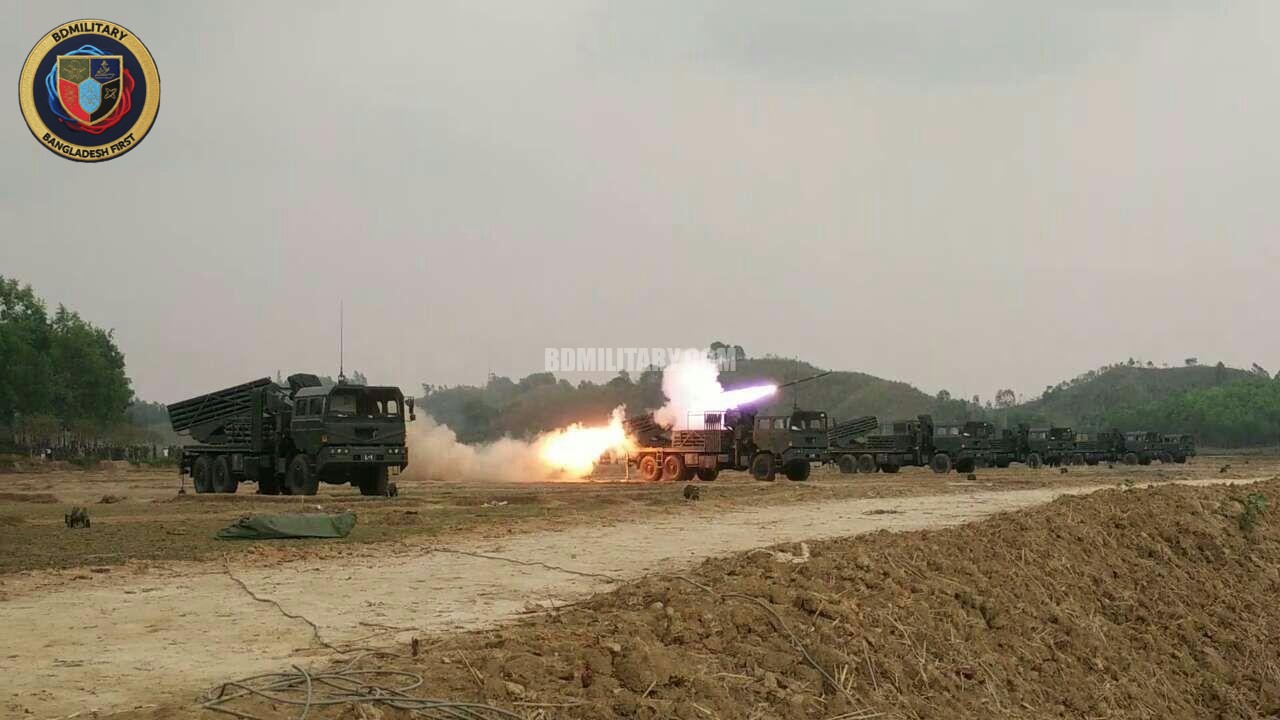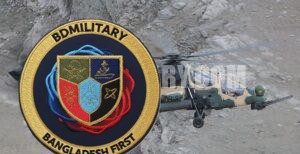Beijing’s firm hold over Bangladesh’s defence procurement landscape has deep roots and appears destined to strengthen further in the decades to come. Nearly half a century after the two countries established diplomatic relations, China remains the undisputed principal supplier of military equipment to Dhaka. This dominance has been achieved through a mixture of affordability, technology transfer, unconditional support, and strategic reliability—an offering few other countries can match. Despite sustained efforts by India and, more recently, the United States to court Dhaka away from Beijing’s orbit, Bangladesh’s armed forces remain reliant on Chinese weaponry and support systems. In practical and strategic terms, that reliance looks set only to deepen.
Since diplomatic relations were formalised in 1975, defence cooperation has been a steady cornerstone of the China–Bangladesh relationship. The partnership began modestly, with China providing training, small arms and basic logistics to the young Bangladeshi military. The relationship took on a formal shape in 2002 when the two sides signed a Defence Cooperation Agreement encompassing training, joint exercises and equipment supply. Over time, China became the single largest source of Bangladesh’s military hardware, providing not just end-products but also helping to build the country’s domestic defence-industrial base. Chinese engineers and advisors have assisted in upgrading Bangladesh’s ordnance factories, shipyards and maintenance facilities, enabling Dhaka to begin limited domestic production of patrol vessels, armoured vehicles and small arms. This pattern of cooperation has created not only institutional familiarity but also a logistical ecosystem that favours Chinese systems.
The past two decades have seen China achieve one success after another in securing major defence contracts from Bangladesh. From 2019 to 2023, roughly 72 per cent of Bangladesh’s arms imports originated from China, accounting for about 11 per cent of Beijing’s total global arms exports during that period. The range of Chinese equipment in Bangladeshi service is comprehensive: the Army operates Chinese-supplied MBT-2000 and VT-5 tanks; the Air Force flies F-7BGI fighter aircraft and is negotiating for newer J-10CE jets; and the Navy has received two refurbished Type 035G “Ming”-class submarines and several Type 056 corvettes. Beyond hardware, Chinese companies have supported the construction of naval infrastructure such as the submarine base at Cox’s Bazar, as well as technology-transfer arrangements for shipbuilding and armoured vehicle production. These deliveries are accompanied by generous financial packages—soft loans, low interest rates and extended repayment schedules—that make China’s offer uniquely attractive to a country with Bangladesh’s budgetary constraints. Crucially, China’s military exports come without political preconditions or lectures on internal governance, a stance that Dhaka values highly.
In contrast, India’s repeated attempts to wean Bangladesh off Chinese military dependence have consistently failed. New Delhi has for years sought to promote “Made in India” defence exports as a way to deepen ties with its eastern neighbour, but with limited results. India’s defence industry, still developing its export capacity, cannot match Beijing’s combination of advanced technology, low prices and flexible financing. Even when the Awami League government—widely viewed as pro-India—was in power for nearly two decades, Dhaka continued to source the bulk of its weaponry from China. Indian offers, such as the cancelled ₹180-crore naval vessel deal with Garden Reach Shipbuilders & Engineers, rarely materialised or were dropped due to technical or political complications. Moreover, India’s occasional heavy-handedness in bilateral relations, from trade disputes to water-sharing issues, has deepened Bangladesh’s instinct to maintain strategic autonomy through close military ties with China. For Dhaka, Beijing represents not just a supplier but also a counter-balance to perceived Indian regional dominance.
The pipeline of Chinese defence procurements now under discussion or in progress further cements this dynamic. Bangladesh is reportedly preparing to purchase around 20 Chengdu J-10CE multirole fighter aircraft from China in a deal worth approximately US$2.2 billion, with deliveries expected later this decade. The Navy continues to modernise with Chinese assistance, including additional surface vessels and advanced sensor systems, while the Army has shown interest in acquiring new-generation air defence systems such as the HQ-17AE. In April 2025, a Bangladeshi Army delegation visited China to explore cooperation on drone and counter-drone technologies, underscoring the shift towards emerging defence domains. China’s involvement in Bangladesh’s shipbuilding, ordnance and electronics sectors also indicates a broader move towards embedded, long-term collaboration rather than mere sales. These projects align with Bangladesh’s “Forces Goal 2030” modernisation programme, which aims to build a more sophisticated, network-enabled military by the end of this decade—an ambition that Chinese support directly underwrites.
Against this backdrop, the United States has sought to reassert its influence over Bangladesh’s defence posture. Washington’s renewed interest is symbolised by the nomination of Brent T. Christensen, a seasoned career diplomat with prior experience in East Asia, as the next U.S. Ambassador to Dhaka. The Trump administration has framed its engagement with Bangladesh as part of a late effort to draw out Dhaka from the shadows of larger regional powers. American officials have offered advanced patrol boats, training programmes and even potential arms sales to help diversify Bangladesh’s defence sources. Yet, despite this rhetoric and the promise of enhanced cooperation, the U.S. faces structural obstacles that make displacing China improbable.
First and foremost, the scale of China’s defence presence in Bangladesh dwarfs that of the United States. Between 2010 and 2017, total U.S. defence sales to Bangladesh amounted to only about US$75 million—a fraction of the billions supplied by China. American exports are typically bound by stringent political and legal conditions, including human-rights certifications and foundational agreements such as GSOMIA and ACSA, which Dhaka has been hesitant to sign. Furthermore, Washington’s reluctance to extend soft credit lines or flexible payment terms makes its offers financially less viable. In a region where cost and financing matter as much as capability, this is a decisive handicap. Additionally, American systems often require complex training, infrastructure and maintenance ecosystems incompatible with the Chinese-based inventory Bangladesh has built up over decades. Transitioning away from Chinese platforms would entail enormous expense and logistical disruption, something Dhaka cannot easily afford or justify.
Beyond economics and logistics lies a deeper question of strategic trust. Bangladesh recognises that China, whatever its global ambitions, is one of the few major powers likely to stand by it in the event of regional tensions—particularly any future friction with India. For Dhaka’s policymakers, Beijing’s commitment to non-interference and its willingness to provide material support without demanding political alignment make it a uniquely dependable partner. The United States, by contrast, has limited stakes in Bangladesh’s immediate security environment and wields little coercive leverage. American attempts to link defence cooperation with governance or electoral reform have often been perceived in Dhaka as unwarranted intrusion rather than partnership. Consequently, Washington’s capacity to reshape Bangladesh’s defence choices remains minimal.
Taken together, these realities point towards an enduring pattern. China’s dominance in Bangladesh’s military supply chain is the product of decades of steady engagement, institutional compatibility, and financial pragmatism. India’s inability to offer competitive alternatives, combined with U.S. constraints and limited leverage, ensures that the pattern will persist. Far from diminishing, Chinese influence is poised to expand as new procurements come online and joint ventures deepen. Even if Dhaka seeks a modicum of diversification in the future, the structural dependence on Chinese systems will continue to shape its military planning and foreign policy decisions.
Ultimately, Bangladesh’s strategic posture reflects a clear-eyed pragmatism. In an era of great-power competition across the Indo-Pacific, Dhaka has chosen the partner that delivers equipment, training and credit without political entanglement. Beijing has built not only a commercial relationship but also a durable foundation of trust and interoperability. Unless the United States can radically revise their approach—by offering equivalent financial terms, deeper industrial cooperation and an assurance of non-interference—China’s position as Bangladesh’s principal defence supplier will remain unassailable. The result is a defence partnership that has outlasted political changes, resisted external pressure, and appears set to endure well into the middle of this century. For all practical purposes, Bangladesh’s military modernisation and China’s regional influence are now intertwined—an outcome that both nations seem content to maintain.

Amir Erez is a mission-driven OSINT Data Analyst specialising in defence and security intelligence, with deep expertise in open-source intelligence gathering, multilingual media analysis, and threat monitoring. Leveraging advanced data analytics, geospatial tools, and social media intelligence (SOCMINT), he delivers timely insights on emerging threats and real-time developments across South Asia and the Middle East/North Africa. Amir holds a Master’s degree in Strategic Studies from the Department of Military Science at Stellenbosch University, South Africa, blending academic rigour with operational insight to support defence and national security decision-making.

